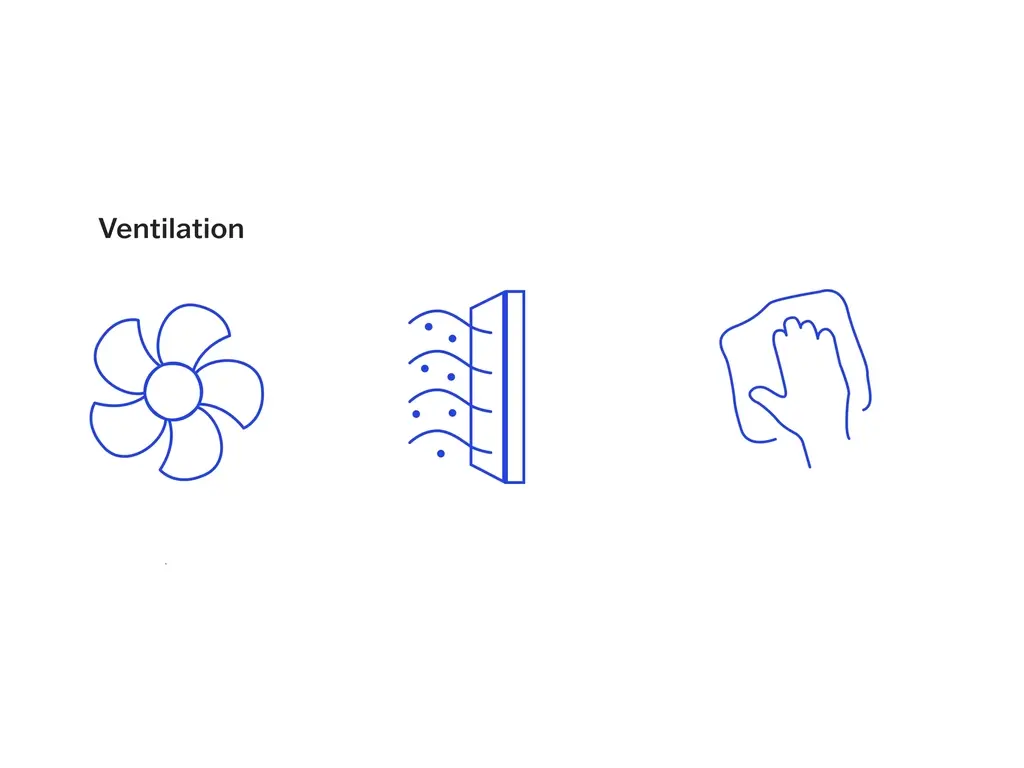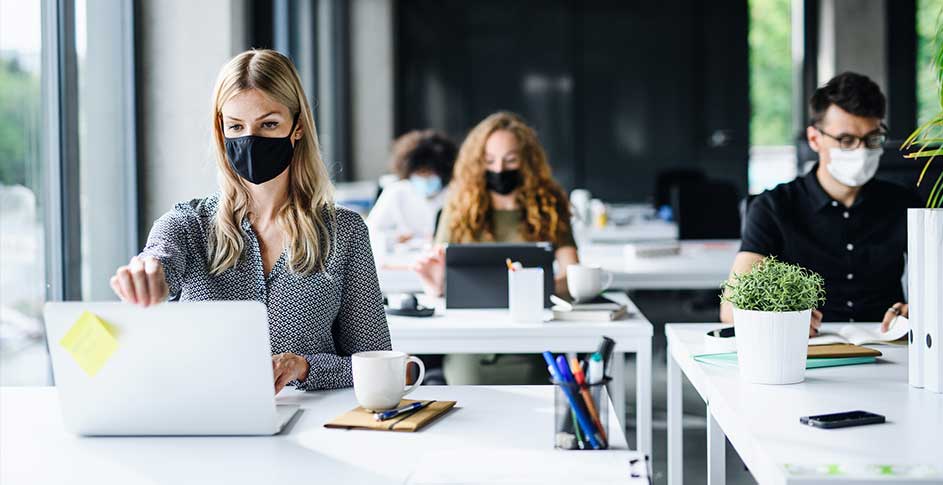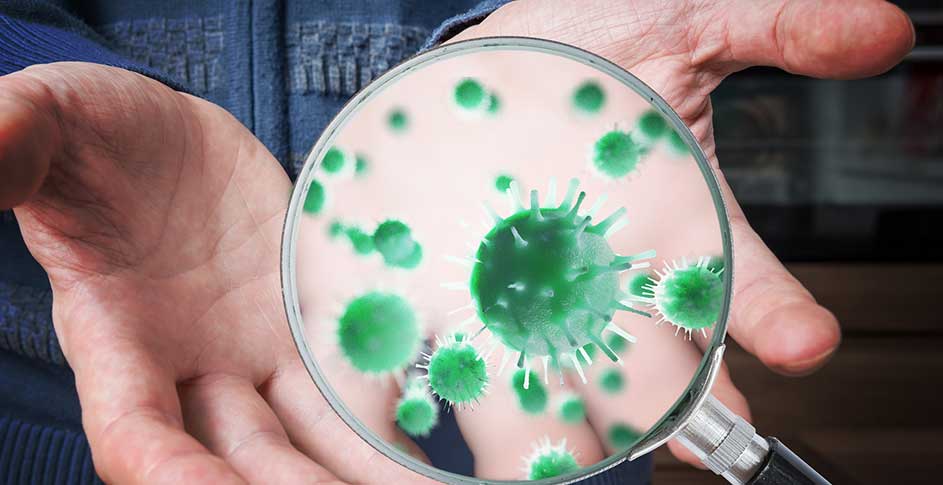
Both government recommendations and private standards now acknowledge what a minority of experts have known for a while: indoor air quality (IAQ) management requires ventilation, filtration, and air cleaning. Below, we summarize why these 3 factors must work together to achieve your organization’s indoor air quality goals.
Ventilation vs. Filtration vs. Air Cleaning
ASHRAE defines ventilation as “the process of supplying outdoor air to or removing indoor air from a dwelling by natural or mechanical means.” Natural ventilation occurs via doors and windows (or cracks around said doors and windows) due to wind, pressure, and density differences. Mechanical ventilation is brought about by equipment such as fans and blowers.
However, the terms “filtration” and “air cleaning” appear to lack official industry definitions or consistent usage. Prior to the COVID-19 pandemic, filtration was often (inaccurately) presented as the only viable air-cleaning technology. Since the pandemic, filtration and air cleaning have often been discussed as distinct concepts. Technically, both these understandings are incorrect.
The term filtration refers to the mechanical capture of contaminants via a fibrous — or occasionally electrostatic/adsorbent — media (i.e., filters.) On the other hand, air cleaning refers to any technology designed to capture, remove, inactivate, or otherwise neutralize airborne contaminants. Therefore, filtration is just one of many air-cleaning technologies.
| Ventilation | Filter-Based Air Cleaning | Non-Filter Based Air Cleaning |
|---|---|---|
|
|
|
Ventilation Alone Is Not Enough
Ventilation is an essential and effective solution for carbon dioxide build-up; however, when it comes to many other contaminants, ventilation needs assistance for the following reasons:
-
Ventilation can’t completely flush contaminants.
Ventilation is often measured in air changes per hour (ACH.) ACH is a measure of how many times per hour a room’s worth of new air is brought into the room, but that doesn’t mean all the old air is forced out. Instead, new air and old air mix, diluting the contamination rather than removing it. Thus, air filters/cleaners can assist ventilation by removing or neutralizing contaminants to industry standards.
-
Contaminated air may be inhaled before it moves outside.
Per a study by scientists at the National Institute of Health, “the most important contributing factor to contaminant transmission in [an] enclosed and mechanically ventilated environment is the path between the contaminant source and the exhaust, not the air changes per hour.”
In fact, one study by a U.S. Department of Energy lab found that “increasing the air change rate removes [SARS-CoV-2] from the source room faster but also increases the rate of exposure in connected rooms.” This goes to show that active air cleaning is necessary when treating air out in the room while it is being ventilated. -
Ventilation may involve renovation.
Per the EPA, “Most residential forced air-heating systems and air-conditioning systems do not bring outdoor air into the house mechanically, and infiltration and natural ventilation are relied upon to bring outdoor air into the home.” In other words, not every building has an HVAC system that brings in outdoor air. What should you do if natural ventilation is insufficient? You could blow your budget on installing or overhauling an HVAC system. Or you could invest in sufficient portable air cleaning to make up the difference. -
Outdoor air isn’t contaminant-free.
The only way to replace indoor air is with outdoor air. Even demand control ventilation (DCV,) which moves air between rooms, must eventually cycle in new air from outside. While outdoor air is usually free of active viruses, it has high concentrations of pollution and pollen. In fact, outdoor air is so polluted across the globe that 90% of nations breathe air that doesn’t meet WHO guidelines. This means that outdoor air needs to be treated by filtration before it enters the building.
Filtration Alone Is Not Enough
Filtration is the solution to several of ventilation’s shortcomings — especially indoor and outdoor particle pollution. However, filtration has its own shortcomings:
-
The most effective filters can’t be used in an HVAC system.
Fibrous filters have MERV ratings based on how effective they are at filtering different sized particles. However, the higher the MERV rating, the more power is needed to push air through that filter. When high-grade filters are installed in an HVAC system, this increased power demand and air pressure can damage the system.
This is especially true for HEPA filters. Per ASHRAE’s page on filtration and disinfection, “It is usually not feasible to retrofit existing HVAC systems with HEPA filters due to high pressure drops and the likelihood that systems will need new filter racks to allow sufficient sealing to prevent filter bypass.”
Fortunately, there are many supplementary alternatives — from induct air cleaners that don’t strain the system to portable devices, which combine both filtration and active air purification. -
Filters are always passive.
No matter how good a filter is, it can’t filter the air it doesn’t come in contact with. If occupants inhale contaminated air before it reaches the filter, the filter might as well not exist as it provides no value. Therefore, passive filtration is best supplemented by active air cleaning technology.
Air Cleaning Alone Is Not Enough
Because ActivePure is an air purification company, you may expect us to claim that non-filter-based air cleaning is devoid of shortcomings. On the contrary, air cleaning is designed to work in tandem with other tools and technology for the following reasons:
-
Most air cleaners don’t address carbon dioxide.
Devices called “carbon dioxide scrubbers” can be used to remove carbon dioxide from the air in spaceships and submarines, but they are not yet practical for offices or homes. Ventilation remains the best method for diluting CO2 on a day-to-day basis. -
Air cleaners specialize.
Most air purification technologies target a specific set of contaminants. In ActivePure’s case, our technology targets airborne viruses, bacteria, mold spores, and VOC gases. When a wider spectrum of cleaning is needed, we supplement our technology with HEPA filters to catch non-living particles and activated carbon filters to aid with odors.
The Future of Indoor Air Quality Standards
No air quality method is designed to work alone. The best air quality plans involve a combination of ventilation, passive filtration, and active air cleaning (as well as source control.) Each tool supplements the others to create the closest possible equivalent to (unpolluted) outdoor air.
Both government and private organizations are currently attempting to develop IAQ standards that universally address infectious aerosols. Below, you can read ActivePure’s IAQ-related guidance for infection risk mitigation in a post-pandemic world.


